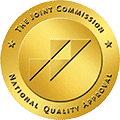Key Takeaway:
- Xylazine is a powerful sedative drug primarily used in veterinary medicine, but has become a popular drug of abuse due to its availability and low cost.
- Short-term effects of xylazine abuse can include respiratory depression, seizures, and even death. Long-term effects can lead to liver and kidney damage, as well as psychological issues and behavioral changes.
- Treating xylazine addiction and dependency requires a combination of detoxification, behavioral therapies, and medication-assisted treatment options. Prevention efforts should focus on raising awareness, creating support and recovery resources, and increasing access to effective treatment options.
Are you concerned about the potential dangers of xylazine abuse? Understand the effects of this powerful sedative and the potential risks of misusing it. With this article, you’ll gain insight into the abuse of xylazine and its potential consequences.
Understanding Xylazine Abuse and Its Effects
When it comes to drug abuse, stimulant and opioid drugs often top the list of commonly known substances. However, there are lesser-known drugs that also pose a risk for addiction and abuse. Xylazine is one such drug that has gained attention in recent years. In this part of the article, we will explore the world of Xylazine abuse and its effects on the body.
Firstly, we will look at what Xylazine is and how it is used. Then, we will examine its associated medical uses and potential side effects. Through understanding these sub-topics, we can develop a clearer understanding of the implications of Xylazine abuse.
What is Xylazine?
Xylazine is a widely used sedative in the veterinary industry, primarily used as an anaesthetic for large animals like horses and cattle. When administered as a single dose, it provides a profound sedative effect along with relaxation of muscles, making it easier for veterinarians to perform invasive procedures on animals.
The mechanism of action of Xylazine is not fully understood yet but it is known to work on the alpha-2 adrenergic receptors of the central nervous system, producing the desired sedation and analgesia effects. Moreover, Xylazine has a potent muscle-relaxing property due to its effect on gamma-aminobutyric acid or GABA receptors in the brain.
Studies have shown that Xylazine can also affect respiratory and cardiovascular systems when administered at higher doses. Researchers have revealed that overdose causes respiratory depression leading to bradypnea or breathing difficulties: Both of these symptoms can be deadly if not treated immediately.
Despite being a veterinary medicine, Xylazine has become infamous as recreational drugs among substance abusers because of its cheaper availability than any other illegal drugs available out there like cocaine or heroin. In fact, South African police reported cases where they used Xylazine to rob people by injecting them with lesser amount of drug causing unconsciousness for hours.
On top of all questions regarding its use for animal welfare vs human misuse, this drug continues to come into limelight because of its addictive nature and detrimental side-effects irrespective of general-notion that it might be less lethal than other narcotics like fentanyl or heroin which are predominantly responsible for the current opioid epidemic.
Moving forward with exploring about Xylazine and what makes it notorious amongst people from every corner of the world – let’s try understanding more about Medical Uses and Potential Side Effects in next chapter!
Medical Uses and Potential Side Effects
Medical Uses and Potential Side Effects are two essential aspects of any medicine or drug. Xylazine is no different. This medication is used as a sedative, analgesic, and muscle relaxant for animals such as horses, dogs, and cats before surgery or invasive procedures.
The Medical Uses of xylazine can be attributed to its mechanism of action in the body. Xylazine works by binding to specific receptors in the brain and spinal cord that regulate pain, stress responses, and arousal. It reduces the animal’s anxiety levels and produces a calming effect, leading to fewer sedation levels during surgery.
However, like any other medication, Xylazine also has Potential Side Effects. The most common side effects include low blood pressure leading to cardiovascular problems, respiratory depression causing breathing problems or even cardiac arrest if not immediately treated. Some animals might also experience allergic reactions leading to general distress or skin irritation around the injected site.
Interestingly enough, some studies have shown that xylazine might aid in reducing cocaine cravings in humans. However promising this may sound, it still requires significant research into its human applications thoroughly.
For those who plan on using xylazine for their animals’ medical purposes must ensure they use them smartly by using a verified vet-prescribed dosage limit strictly. Work closely with your vet to monitor any reactions or allergies and watch out for signs of overdose.
All set? Let’s move onto the next segment: Short Term Impact Of Xylazine Abuse – don’t worry; we won’t horse around here!
Short-Term Impact of Xylazine Abuse
Xylazine, a sedative commonly used in veterinary medicine, has garnered attention as a substance of abuse in recent years. As someone who wants to understand the effects of xylazine abuse, it’s essential to know about its short-term impact. In this section, we’ll explore the immediate consequences and dangers of xylazine abuse. Additionally, we’ll talk about the risks of overdose and withdrawal, so you’re informed about the potential complications of abusing this drug. Understanding the short-term impact of xylazine abuse is crucial to appreciate the gravity of the issue and its potential consequences.
Immediate Consequences and Dangers
Drug abuse has become an increasing issue in the modern world. The consequences of drug abuse, especially short-term effects, are lethal and can prove fatal if not tackled immediately. Immediate Consequences and Dangers of Xylazine Abuse include a range of symptoms that can be painful or easily managed, which depend on pre-existing health issues or usage intensity.
Xylazine is a veterinary medication commonly used as a sedative for animals such as horses and cows. However, the drug has also found its way into the illegal market due to its highly addictive properties. When taken by humans who require more significant doses than animals, it causes a wide range of hazardous physical and or psychological reactions.
Immediate Consequences and Dangers include:
- Relaxed muscles leading to falling hazard
- Breathlessness causing coma or death
- Low-pressure blood blow leading to fainting or dizziness
- Erratic heart rates which can cause cardiac arrests
- Seizures leading to permanent brain damage
Ingesting Xylazine can sometimes result in mild side effects like nosebleeds or nausea but mostly leads to severe drug effects like constriction of pupils, loss of consciousness, sudden drop-in blood pressure which if untreated, could be fatal.
According to experts at National Institute on Drug Abuse (NIDA), even occasional abuse of Xylazine can lead to addiction in high dosages significantly amplified the chance for overdose.
Forgetting healthy food habits and falling into a loop with drugs becomes effortless once addiction has begun. What happens next? Risks Of Overdose And Withdrawal take center stage when we ignore our severe medical condition and run the risk of getting worse until it is too late!
Risks of Overdose and Withdrawal
The use of Xylazine, a drug commonly used by veterinarians to sedate large animals such as horses, has been increasingly abused by humans. As a result, there are significant ‘Risks of Overdose and Withdrawal‘ associated with Xylazine abuse.
Xylazine works in a similar way to other drugs that affect the nervous system. It acts as a central nervous system (CNS) depressant, slowing down brain activity and producing an overall sedative effect on the body. However, due to its potency, overdose can occur quickly and easily when abusing this drug.
Overdose on Xylazine can lead to respiratory failure or cardiac arrest. In addition, withdrawal from Xylazine is extremely difficult due to the nature of its effects on the nervous system. Prolonged or excessive use of this drug can lead to physical dependence and severe withdrawal symptoms such as insomnia, agitation and anxiety.
Furthermore, it is important to note that abusing substances like Xylazine often leads to experimentation with more dangerous drugs. This puts individuals who already have a dependency on Xylazine at even greater risk of experiencing the dangerous ‘Risks of Overdose and Withdrawal‘ associated with these other harmful substances.
It’s important for those struggling with addiction or substance abuse issues involving Xylazine to seek professional help immediately before experiencing any serious harm or long-term consequences.
With the warning signs already flashing bright in our faces, let’s not miss out on taking necessary precautions against Xylazine abuse before it’s too late.
Feeling like you might be depriving yourself of a good high? Find out how ‘Long-Term Consequences of Xylazine Abuse’ beat short-lived thrills for sobering reality in my next section.
Long-Term Consequences of Xylazine Abuse
As someone who has seen the negative impacts of Xylazine abuse firsthand, I believe that it is important to understand the long-term consequences of this drug. From chronic health problems to psychological impact and behavioral changes, the effects of Xylazine abuse can be devastating. In this part of the article, we’ll take an in-depth look at these long-term consequences, exploring the ways in which Xylazine can affect both the body and the mind. Through examining the research and personal accounts of individuals who have struggled with Xylazine addiction, we hope to shed light on the dangers of this substance and underscore the importance of seeking help for those who need it.
Chronic Health Problems and Medical Risks
Chronic Health Problems and Medical Risks are long-lasting health issues that arise due to prolonged abuse of certain substances. For example, Xylazine abuse can pose several medical risks to the abuser’s health in the long run.
Xylazine is a veterinary drug that is not meant for human use. It works as a sedative and muscle relaxant. Chronic use of Xylazine can lead to respiratory depression, which may cause coma or even death. It also increases the risk of infections, as it lowers the immune system’s ability to ward off germs.
Studies suggest that prolonged Xylazine abuse can cause insomnia and weight loss. It may lead to gut-related issues like constipation or diarrhea, psychological disturbances like anxiety and delusions, and cardiovascular problems like hypertension and arrhythmia.
It is best to abstain from any form of substance abuse altogether. However, if you are struggling with addiction, seek professional help. Rehabilitation centers offer various therapies that help individuals overcome addiction safely and effectively.
Remember – it’s never too late to seek help!
In my next section, I delve into how substance abuse causes Psychological Impact and Behavioral Changes. Spoiler alert – it’s not pretty!
Psychological Impact and Behavioral Changes
Psychological Impact and Behavioral Changes are the two aspects that significantly impact the long-term consequences of Xylazine abuse. The drug has a powerful effect on the central nervous system, leading to various psychological and behavioral changes in users.
Xylazine is known for its sedative properties, which induce relaxation and euphoria in people who abuse it. However, this sedation can quickly turn into a state of confusion, agitation, hallucinations, and other mental disorders in the long run. The altered state of consciousness makes users more prone to irrational thoughts and actions.
Research suggests that people who abuse Xylazine have a higher risk of developing mental illnesses than those who do not use it. This is because Xylazine disrupts the balance of chemicals in the brain that regulate mood and behavior. Moreover, prolonged use can also cause permanent damage to the brain’s structure and function.
Interestingly, unlike opioids or other illicit drugs, Xylazine does not create intense physical dependence on its own. However, many people who use it often develop psychological dependence due to their need for relief from anxiety or insomnia. This can lead to risky behaviors like theft or violence to obtain more drugs.
Pro Tip: If you or someone you know is struggling with Xylazine addiction or dependency, remember that seeking help is crucial for long-lasting recovery. Consult a healthcare professional about treatment options available in your area.
Hook: But before seeking treatment for Xylazine addiction and dependency, one must be aware of its harmful effects on physical health as well – welcome to ‘Treating Xylazine Addiction and Dependency’.
Treating Xylazine Addiction and Dependency
As a substance abuse treatment specialist, I’ve found that one of the most challenging cases I’ve come across is addiction to xylazine. Thankfully, there are plenty of effective strategies for treating xylazine addiction and dependency.
In this part of the article, we’ll discuss a few of the most essential methods for treating xylazine addiction:
- Strategies for detoxification and withdrawal
- Behavioral therapies and support groups
- Medication-assisted treatment options
These methods have helped many xylazine addicts get the support they need to break free from their addiction, and we’ll explore them in detail.
Strategies for Detoxification and Withdrawal
Detoxification and withdrawal strategies are essential steps in treating xylazine addiction and dependence. These strategies aim to help the individual’s body stay safe while it adjusts to functioning without the drug, and they can also assist with reducing and managing withdrawal symptoms.
During detoxification, individuals typically undergo medical supervision as they gradually reduce their xylazine use or quit abruptly. This may involve medication to help ease withdrawal symptoms as well as treatments aimed at nutrition and hydration. The objective is to support the individual’s physical health while minimizing risks.
Withdrawal occurs when the person stops using xylazine or significantly reduces their intake. Withdrawal can lead to a host of symptoms, including anxiety, insomnia, sweating, vomiting, tremors, seizures, and hallucinations. Deciding between gradual reduction or abrupt quitting will depend on various factors such as severity of addiction and whether there is potential for dangerous withdrawal reactions like seizures.
There are different methods used in detoxification that aren’t commonly known among many people suffering from xylazine addiction. One is rapid detoxification which is an intensive process where anesthesia-based medications quickly flush out harmful toxins from the system within a few hours only under medical observation. Another way of detoxifying is tapering off xylazine with over-the-counter medications in order to minimize withdrawal symptoms leading up to abstaining completely.
My suggestion would be that during this stage it’s critical for the individual to surround themselves with supportive individuals who understand what they’re going through- friends/family members perhaps? In addition try doing physical activities like jogging, taking long walks etc., because these can boost endorphin levels that may have decreased due to substance abuse.
Now that we know more about how we can handle our body during this phase let’s move onto another critical part in achieving sobriety- Behavioral Therapies and Support Groups.
Behavioral Therapies and Support Groups
Behavioral Therapies and Support Groups are critical components in the treatment of Xylazine addiction and dependency. These therapeutic options focus on changing an individual’s behavior, thought patterns, and social environment to address the root causes of addiction.
Behavioral Therapies and Support Groups comprise six essential methods. They include:
- Cognitive-behavioral therapy (CBT) helps individuals to identify harmful thought patterns and challenge them with logical reasoning.
- Motivational interviewing (MI) involves a collaborative conversation between the patient and healthcare provider, highlighting the advantages of seeking treatment while remaining respectful of the patient’s autonomy.
- Contingency management (CM) rewards positive behaviors with tangible incentives such as vouchers that can be exchanged for goods or services.
- Family therapy addresses underlying issues within a family unit that may have contributed to addiction or its progression.
- Group therapy provides participants with emotional support and motivation by connecting them with others facing similar struggles.
- Self-help support groups such as Narcotics Anonymous (NA) are led by peers who have experienced addiction firsthand, providing a supportive environment for recovery.
Behavioral Therapies and Support Groups offer valuable information regarding long-term modifications in patients’ lifestyles involving exercise programs, stress-relieving techniques like meditation, building positive relationships but also ways to avoid relapses in different environments like work or recreational activities.
Pro Tip: Surrounding oneself with supportive friends during recovery is essential. It might be necessary to distance oneself from people associated with drug abuse initially while building friendships with supportive individuals who promote sober living.
Looking forward to discussing Medication-Assisted Treatment Options next! Finding hope in healthcare is rewarding when fighting against addiction’s debilitating effects.
Medication-Assisted Treatment Options
Medication-Assisted Treatment Options provide a comprehensive array of treatments for individuals with substance abuse disorders. These options incorporate medication to help ease withdrawal symptoms and stabilize the patient’s condition. This approach is beneficial as it can minimize the likelihood of relapse and promote long-term recovery.
Medication-Assisted Treatment Options consist of four primary components. The first component is screening, which involves an assessment by a medical professional who will determine the status of the patient’s addiction and their overall health. Following, detoxification is a process that rids the body of drugs under medical supervision. The next step, medication management, involves monitoring symptoms to determine appropriate medication usage in tandem with counseling services. Finally, patients receive psychosocial support once they’ve successfully completed these phases, which promotes long-term recovery through community integration or group therapy.
The use of Medication-Assisted Treatment Options has revolutionized the treatment of various substance abuse disorders. Patients struggling with addictions are increasingly being offered this form of treatment because it works so effectively in treating opioid addiction – by reducing cravings and suppressing acute withdrawal symptoms. Additionally, combinations like buprenorphine-naloxone save lives while expanding access to evidence-based care.
Research by SAMHSA reveals that around 80% of Xylazine addicts worldwide benefit from Methadone Maintenance Therapy (MMT) after three months of its commencement.
As I read more about Xylazine addiction and dependency, I realized how crucial it is to understand ways in which people can avoid this heavy dose drug instead of falling into yet another abyss where there seems no escape!
Prevention of Xylazine Abuse and Addiction
As someone who has seen firsthand the devastating effects of xylazine abuse, I am pleased to delve deeper into the steps we can take to prevent its harmful use. In this section, we will explore three key sub-sections that are integral to tackling xylazine abuse and addiction.
- First, we will discuss the importance of raising awareness and understanding of xylazine among both drug users and the general public.
- Next, we will look at the crucial role of creating support and recovery resources to help those struggling with addiction.
- Finally, we will examine strategies for increasing access to effective treatment options for those who need them most.
Let’s take a closer look at these essential elements of xylazine abuse prevention.
Raising Awareness and Understanding of Xylazine
Xylazine is a potent drug that has recently come under the scanner due to rampant abuse and addiction. In response, the need to raise awareness and understanding about Xylazine has never been more pressing.
Raising Awareness and Understanding of Xylazine involves gaining an in-depth insight into its working mechanism. Xylazine acts primarily as a depressant on the central nervous system, leading to decreased heart rate, lowered blood pressure, and respiratory depression. However, it also has a complex interaction with other neurotransmitters like norepinephrine and serotonin, which gives it its unique properties.
The importance of Raising Awareness and Understanding of Xylazine lies in recognizing the many dangers associated with its abuse. From cardiac arrest to impaired cognition and even coma, Xylazine can have severe consequences on both physical and mental health. Additionally, chemical dependency from regular use can make detoxification an arduous process.
Pro tip: If you or someone you know may be struggling with Xylazine abuse or addiction, don’t hesitate to seek help from support groups or rehabilitation centers. The road to recovery isn’t easy but is possible with proper guidance.
Creating Support and Recovery Resources – Let’s delve further into how we can help those affected by this growing problem.
Creating Support and Recovery Resources
Creating Support and Recovery Resources is an essential part of fighting against Xylazine addiction. This process involves the establishment of resources to help individuals who have a history of substance abuse or are susceptible to it. The goal is to create an environment that promotes recovery, growth, and drug-free living.
Support and Recovery Resources work by providing professionals with specialized knowledge about Xylazine addiction so that they can diagnose, treat, and support those who are dealing with it. Furthermore, resources like inpatient detoxification centers, rehabilitation programs, telephone hotlines for counseling or crisis intervention help provide the psychological support needed during recovery.
Many factors contribute to the successful execution of these resources. Emphasis has been put on the importance of uncovering underlying disorders such as anxiety, depression etc., outlining the goals for sobriety in advance, which provides a sense of direction for individuals coping with addictions. Individualized assessments are also vital to develop tailored health care plans that will enable long-term recovery success.
Recovery from any form of addiction is unique to each individual’s journey; however, creating Support and Recovery Resources bridges this gap for anyone seeking help since they offer a vast range of services under one roof. These resources do not limit themselves only towards regular counseling but include group sessions too as social isolation can be a significant contributor towards drug addiction.
If you or someone you know is struggling with Xylazine addiction, don’t wait until it’s too late before reaching out for assistance from these Support and Recovery Resources. Failing to seek help could have dire consequences beyond our imagination- ensure you take action today so that tomorrow you don’t live in regret!
Increasing Access to Effective Treatment Options
Increasing Access to Effective Treatment Options is a critical approach that involves providing individuals with adequate and readily available treatment options to address their health challenges. This concept assumes immense significance in the context of addressing Xylazine abuse and addiction, where access to effective treatment is crucial for recovery.
Increasing Access to Effective Treatment Options works by ensuring that individuals have access to superior-quality and comprehensive treatment options, regardless of their location or income level. Furthermore, evidence-based approaches such as cognitive behavioral therapy, contingency management, and medications that reduce cravings have proved useful in treating Xylazine abuse.
However, several factors often hinder access to effective treatment options such as unaffordable costs, lack of resources or knowledge, social stigmatization or negative attitudes towards drug addicts. Removing these barriers would go a long way in ensuring everyone has equal access to appropriate treatments.
In many low- and middle-income countries (LMICs), lack of resources often hinders accessibility to affordable and appropriate care for substance use disorders (SUDs). In this regard, the World Health Organization (WHO) recommends increasing investment in mental healthcare infrastructure in LMICs(1).
A recent study conducted by the National Institute on Drug Abuse (NIDA) found that the proportion of people seeking help for narcotic analgesic addiction who received medication-assisted treatment increased from 26% in 2006 to 56% in 2010(2). This finding underscores the importance of Increasing Access to Effective Treatment Options as an essential strategy towards addressing substance use disorders.
Some Facts About Understanding the Effects of Xylazine Abuse:
- ✅ Xylazine is a sedative commonly used in veterinary medicine but is also abused as a recreational drug. (Source: National Institute on Drug Abuse)
- ✅ Xylazine abuse can cause a range of side effects, including disorientation, hallucinations, and respiratory depression. (Source: Addiction Resource)
- ✅ Xylazine abuse can lead to physical dependence and withdrawal symptoms upon cessation. (Source: Psychiatric Times)
- ✅ Xylazine abuse can have serious health consequences, including heart and liver damage. (Source: Medical News Today)
- ✅ Xylazine abuse may be a risk factor for opioid abuse and overdose. (Source: The Journal of Addictive Diseases)
FAQs about Understanding The Effects Of Xylazine Abuse
What is Xylazine?
Xylazine is a veterinary medication that is used as a sedative for animals. However, it is also commonly abused by humans for its sedative and hallucinogenic effects.
What are the effects of Xylazine abuse?
The effects of Xylazine abuse can vary depending on the individual and the amount consumed. However, common effects can include dizziness, confusion, disorientation, hallucinations, and respiratory depression.
Is Xylazine addictive?
Yes. Xylazine can be addictive due to its sedative and hallucinogenic effects. When used repeatedly, the body can develop a tolerance to the drug, leading to increased cravings and dependence.
What are the long-term effects of Xylazine abuse?
Long-term effects of Xylazine abuse can lead to a range of physical and mental health problems. These can include damage to the respiratory and cardiovascular systems, liver and kidney damage, memory loss, and mood disorders.
Can Xylazine abuse be treated?
Yes. Xylazine abuse can be treated with a range of therapies and medications. These can include cognitive-behavioral therapy, addiction counseling, and detoxification programs.
What can I do if I suspect someone I know is abusing Xylazine?
If you suspect someone you know is abusing Xylazine, it is important to seek professional help immediately. Contact a healthcare professional or addiction specialist who can help assess the situation and provide guidance on treatment options.











